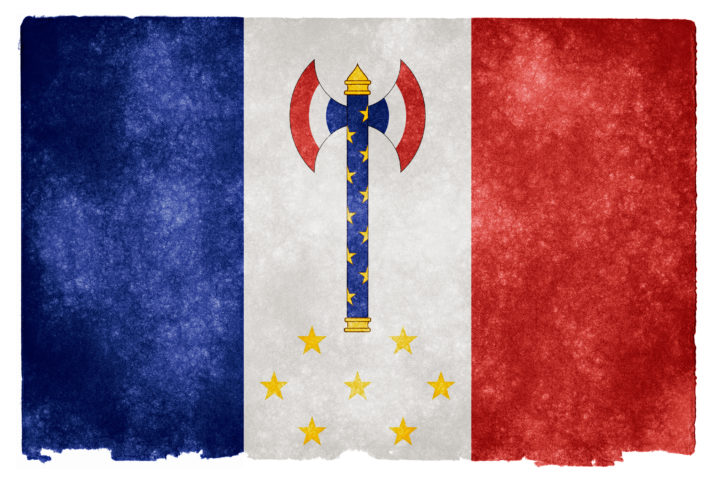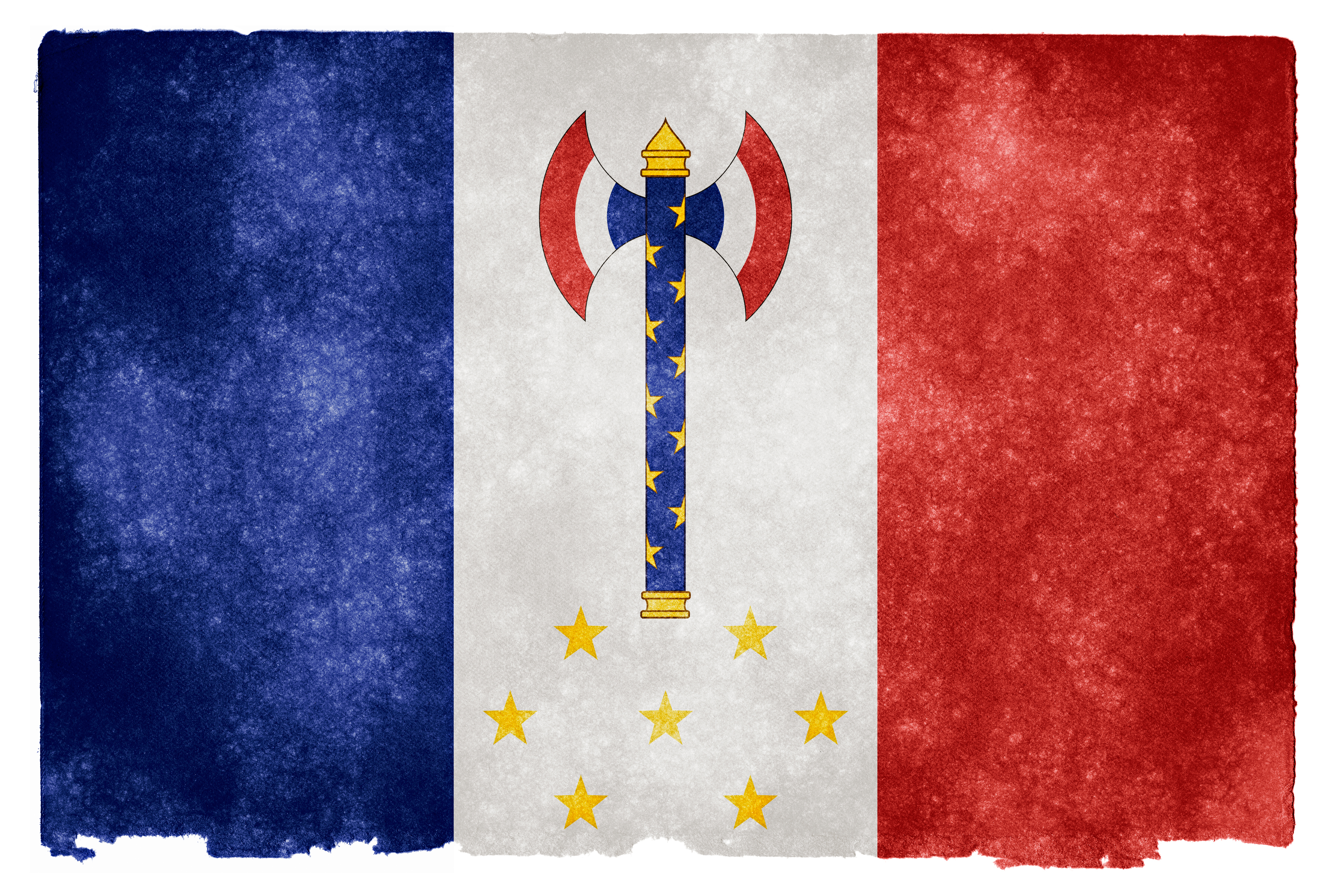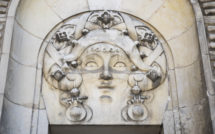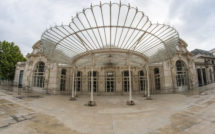

This is part of a roundtable, Author-Meets-Critics: Vichy contre Vichy, Une capitale sans mémoire by Audrey Mallet
For historians of modern France, it can sometimes appear that all roads lead to the small spa town of Vichy. Such is the legacy of World War II in France that the four “dark years” of German Occupation and Vichy rule still cast long shadows over French society today. Under Marshal Philippe Pétain, the French State—as the new regime was termed—presided over the unoccupied southern section of the nation and was nominally responsible for aspects of day-to-day administration in the country as a whole. The choice of the location of Vichy, regaled as the queen of the French spa resorts, as seat of government had a major impact on the town’s reputation. By dint of possessing sufficient hotel accommodation to accommodate ministers and their staff, and by the absence of any clear link between the town and prominent politicians of the Third French Republic, Vichy emerged as the victor in the battle to play host to the wartime French government. It was to be a decision with far-reaching repercussions: for the people of Vichy, the war was considered something to forget.
In this insightful, thoroughly well-written book, the French historian Audrey Mallet—born and brought up in Vichy—examines the impact of the “dark years” on the spa town. The subtitle of the book, “a capital without memory,” says much about the attempts by the Vichyssois to erase the uncomfortable memories of the Occupation era. Indeed, in one of the later chapters, Mallet comments on the tendency for “national obsession” around the Occupation, in the form of the outpouring of academic and popular enquiry into World War II in France as a whole, and compares this to the “local silence” around these events in the town itself.
There are three different levels to the book. First, there is the contextualization of the Occupation within the historical chronology of the period, locating the people of Vichy in a wider context of the Third French Republic and continuity with the Fourth French Republic and beyond, reflecting the approach taken in recent historiography by Julian Jackson (2001) and others. Second, there is an examination of the lived experiences of the French, specifically, the Vichyssois, during the four years in which the regime was based in the town. This engagement with localized experiences of lesser-known and indeed unknown people has much to commend it, reflecting the methodology taken in this reviewer’s own recent work (Dodd and Lees 2018). Mallet skilfully weaves the experiences of “ordinary” people with those of government ministers and foreign diplomats. The contrast, in the chapter entitled “Vichy capitale”—“Vichy the capital”—between the gastronomic experiences of local working and middle-class people and those of the political classes is staggering, bringing home the reality that food, even in the political capital of Pétain’s regime, was a highly polarizing theme. The political classes could afford to eat well: a meal in one of Vichy’s many hotel restaurants cost between ten and fifteen times the average monthly salary of an office worker. This meant that, in reality, many people who were not part of this elite resorted to the “grey” or “black” markets, and there were even rare examples of protests and scuffles over food. Vichy, it seems, was not immune to the pressures faced by the inhabitants of large towns and cities across France. Yet government ministers could ensure that there were suitable supplies when it suited—vegetables and other essentials intended for Clermont-Ferrand were frequently hived off to Vichy.
There is also consideration here of the lived experiences of the town’s Jewish population under Pétain’s rule. As Mallet notes, the tendency for the Vichy authorities to discriminate against foreign-born Jews, rather than “French-born” Jews, did not automatically apply to Vichy. Rather, the town’s Jewish population—largely comprised of well-established French families with a bigger number of transient foreign-born refugees—was ousted to demonstrate the government’s commitment to anti-Semitic policies. Mallet acerbically points out that whether or not the intention was to save the Jews from the Germans—a possibility given the presence of the Gestapo and other military authorities in the town, where they could observe the movements and activities of Pétain’s government—their goods and homes were swiftly taken up to accommodate the occupiers. Much of the focus on everyday lived experiences is detailed, nuanced and truly interesting. But where Mallet goes beyond most typical examinations of the everyday in the context of the Occupation era, is through her examination of the lived experiences of the Vichyssois post-Liberation, up to the present day. This is very much a microhistory of the inhabitants of Vichy and an attempt to capture some of their lived experiences, from the 1930s through to the present day, including some of the attempts by local historians to meet the demand for World War II “dark” tourism.
The final layer of the book is the town itself. Having dealt with the lived experiences of its inhabitants, Mallet also, in the course of the book, examines the development of the town—its infrastructure and governance; the changing fortunes of the tourist trade—in an attempt to capture the layers of memory prevalent in the town. In so doing, Mallet engages with some of the scholarship around the memory of the Vichy era, including the “Vichy syndrome” coined by Henry Rousso (1987). Only, this reviewer would argue, could a local produce such a vivid examination of their hometown. Mallet acknowledges in the introduction the tension inherent in writing about one’s place of birth: can a historian ever be truly objective about where they come from? Such a view, as Mallet, argues, is somewhat outdated. It is widely acknowledged that it took foreign historians—Robert O. Paxton (1972) chief amongst them—to begin to prise open the realities of Vichy government and to unpick the complexities of policy, propaganda and reality (none of which, as subsequent research, including my own work (Lees 2018), has demonstrated, ever really reflected one another). But that is to ignore that French historians were working within the constraints of a conservative French state, especially in the de Gaulle era, and did not necessarily have the same methodological training or perhaps imagination as their Anglo-Saxon counterparts. It is also to ignore the pioneering work of Marcel Ophüls in the 1969 film Le Chagrin et la pitié (The Sorrow and the Pity), who was already probing the realities of the Occupation and Vichy era before Paxton’s book was published. For some, one’s hometown might appear to hold little by way of historical interest—despite growing up in a Lancashire mill town, this reviewer had no interest whatsoever in the English Industrial Revolution—but for Mallet, the strength of her work lies precisely in her passion to investigate the evolution of her hometown since the 1940s. The town comes to life in the pages of the book. We see the attempt by the town as a collective to close down the memory of the Occupation era, the gradual restoration of spa tourism in the 1950s and then the controversy of the Algerian War, before the collective attempts at emphasizing not the Occupation but the belle époque in tourist materials at a time when, in Rousso’s terms, there was an explosion of Vichy-related cultural and academic output.
In the conclusion, Mallet critiques Adam Nossiter’s (2001) suggestion that the Vichy regime could only have existed at Vichy. She makes a convincing point. Having touted for business as seat of government in 1870, during the Franco-Prussian War, at a time when the government fled to Bordeaux (before returning to Versailles), the spa town was on the lookout for the economic benefits of playing capital city. Few could blame the local authorities for welcoming the elected representatives of the two houses of parliament in July 1940—the town had already shifted from a genteel resort into a place of refuge for injured soldiers and refugees; parliamentarians offered likely cash boosts to most hotels. In the longer term, it was Vichy’s misfortune to play host to Pétain’s regime. The local population, and the physical infrastructure of the town, had the presence of the government imposed on them, with all the daily ceremonial acts and constant exposure to governmental missives and propaganda that this entailed. Aside from the enterprising owners of hotels and the local dignitaries, the “ordinary” Vichy people did not have much of a choice. They were, as Mallet records so clearly in this book, living in a sort of Pétainist bubble, where the realities of the War, and to some extent some of the realities of the Occupation, were lived out elsewhere. The project of National Revolution—little more than a series of slogans by 1942—was played out in miniature before the eyes of the Vichyssois. They did not choose to gift the name of their town to a regime which went onto deport 76,000 Jews in the name of the National Revolution. It is unsurprising, frankly, that some local representatives have sought, as Mallet notes, to add a disclaimer to references to the Vichy regime as being “Pétain’s dictatorship, hosted at Vichy.”
The aftermath of the war has truly brought mixed fortunes for the locals. On the one hand, it is not surprising that, having been subjected to the presence of the Marshal for so long, the people of the town appeared to back the maintenance of French Algeria in the 1950s, adopting a stance eventually supported only by the far-right. On the other, the two facets to Vichy—the history of the spa town visited by the great and the good of the late-nineteenth and early-twentieth centuries with its enduring health and beauty products, and the legacy of those fateful four years in the Second World War—have continued to bring some degree of commercial and economic prosperity for the town. As Mallet points out, present-day tourists fall into either one or the other camp (either interested in the spa and Vichy-branded goods or the Occupation), but some fall into both. Within a matter of pages in the introduction, Mallet punctures the myth that the municipal archives of the town are closed to researchers. Disorganised, not properly catalogued, yes, but closed, absolutely not: here Mallet’s status as an insider clearly had its advantages when conducting research into the book. So, the town as a collective, alongside efforts by some individuals, has begun to reclaim some of its own history for itself, to capitalize, perhaps, on the darkest of periods of French history.
The inhabitants of Vichy, of course, would have experienced the Occupation years differently had the town not been chosen as the seat of government. The town’s Jewish population would have been subject to the same discrimination, but their departure might have been less swift; food shortages might well have been more acute; young men would have been requisitioned for the two work schemes (the “Relief” (La Relève) of June 1942 and the Obligatory Work Service (Service du Travail Obligatoire, STO) of February 1943). But the town’s reputation would have remained one of faded but dignified elegance, untainted by the presence of Pétain and his ministers. Instead, the present-day Vichyssois must face up to the realities of what happened over those four years. Most of us cannot really empathize with such an experience. The population of Leamington Spa, or Cheltenham, or Bath, in the UK, or Cannes or Royan in France, all comparable resorts in scale and size to Vichy, do not have to live with the legacy of an extreme-right, frequently incoherent and often incompetent government. This makes Mallet’s work all the more hard-hitting. She, unlike most, understands what it means to grow up with the name of one’s hometown attached to such a regime.
That is what makes this book so compelling. Case studies of localized experiences during the Occupation era are nearly always fascinating—they raise questions about the actions of people at all levels of the social stratum living and working under enormous pressures, through the dual impositions of the German (and Italian in some south-eastern locations) occupiers and the Vichy authorities. Robert Gildea’s examination of everyday experiences in the Loire Valley in Marianne in Chains, published in 1998, remains one of the best such works around; more recently, work is emerging on the experiences of Jews on localized levels (Daniel Lee 2016) and of lived experiences of the cheminot community (Ludivine Broch 2016). What makes Mallet’s work different from most such studies is that it combines everyday lived experiences under Occupation—in the same meticulous way as Gildea—with the evolution of the Vichyssois and their attitude towards the past. The irony is not lost on Mallet that many of the “sites of memory” (in Pierre Nora’s terms; 1990) of the Occupation era are commemorated by museums, which cater to the broader French obsession with the “dark years.” That Vichy—the byword for those years—does not possess such a museum is remarkable. As Mallet notes, Vichy represents a truly unique case study in the evolution of French collective memory of the Second World War. The people of Vichy have sought to forget, then to rewrite the past. Mallet’s book is likely to disturb such attempts to reassert an alternative reality of wartime Vichy. By exposing the tensions that persist in the contemporary town, Mallet reaffirms that the war of memory is not over for Vichy. Rather, Mallet has proved in this book that to understand Pétain’s regime, one must actually follow the road to Vichy: until the town can heal its wartime wounds and confront the realities of what happened there during the Second World War, the resort represents a microcosm of the continued pertinence of the Occupation in modern France.
David Lees is Senior Teaching Fellow in French at the University of Warwick, UK, where he teaches and researches modern French history, politics and culture. He is working on a book entitled Propaganda in Modern France to be published with Palgrave Macmillan in 2022.
Vichy contre Vichy: Une capitale sans mémoire
By Audrey Mallet
Publisher: Plon
Paperback / 304 pages / 2019
ISBN: 978-2-410-00961-3
References
Broch, L. 2016. Ordinary Workers, Vichy and the Holocaust. French Railwaymen and the Second World War. Cambridge: Cambridge University Press.
Dodd, L. and D. Lees. 2018. Vichy France and Everyday Life: Confronting the Challenges of Wartime, 1939-1945. London: Bloomsbury.
Gildea, R. 2002. Marianne in Chains: Daily Life in the Heart of France during the German Occupation. New York: Picador.
Jackson, J. 2001. France the Dark Years, 1940-1944. Oxford: Oxford University Press.
Lee, D. 2016. Pétain’s Jewish Children. French Jewish Youth and the Vichy Regime, 1940-1942. Oxford: Oxford University Press.
Lees, D. 2018. Defining everyday Frenchness under Vichy. In L. Dodd and D. Lees. Vichy France and Everyday Life: Confronting the Challenges of Wartime, 1939-1945. London: Bloomsbury.
Nora, P. 1990. Lieux de mémoire, 3 vols. Paris: Gallimard.
Nossiter, A. 2001. The Algeria Hotel. France, Memory and the Second World War. London: Methuen.
Ophüls, M. 1969. Le Chagrin et la pitié. [Film].
Paxton, R.O. 1972. Vichy France: Old Guard and New Order, 1940-1944. New York: Columbia University Press.
Rousso, H. 1987. Le Syndrome de Vichy. Paris: Seuil.
Photo: Grunge textured historical flag of Vichy France on vintage paper | Shutterstock
Published on November 18, 2019.




